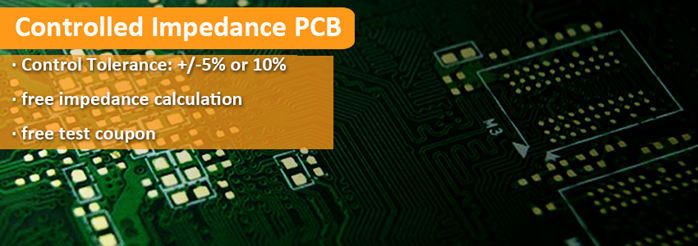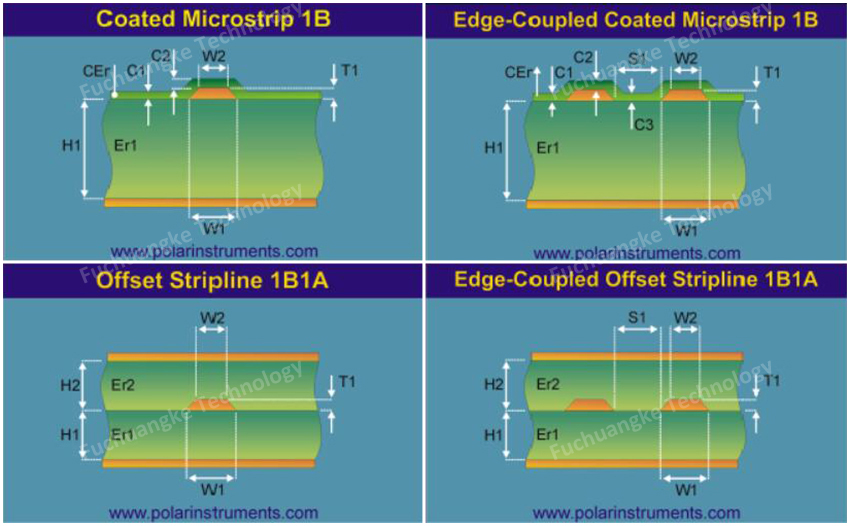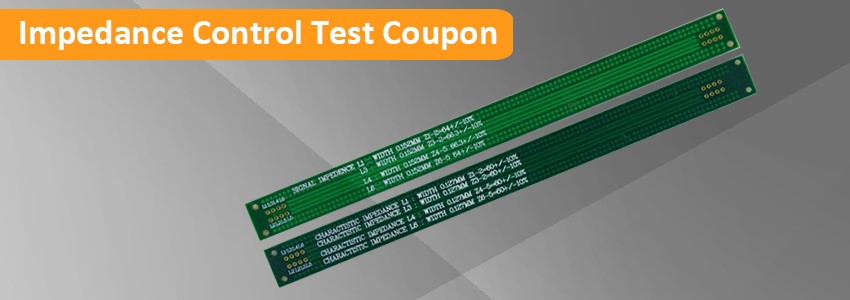
Electronic components become smaller and PCB designs become faster, in other words, PCBs are more complicated nowadays. As printed circuit board signal switching speeds increase, PCB designers in this day and age need to understand control the impedance of PCB traces. Short signal transition times and high clock rates of modern digital circuitry require PCB traces to be considered not as simple connections, but as transmission lines.
What is Impedance?
Impedance is the combination of the capacitance and inductance of a circuit when operated at high frequency and measured in Ohms. The resistance being the opposition to current flow present in all materials. The resistance is the opposition to current flow resulting from the effect of the inherent capacitance and inductance of the conductor interacting with changes in voltage and current. In DC circuits there is no reactance and the resistance of copper conductors is typically insignificant.
What is Controlled Impedance PCB?
Controlled impedance PCBs are the printed circuit boards with controlled impedance in the stages of design, manufacturing and performance. It’s hard to control impedance, unless you carefully design the PCB’s trace and its work environment because impedance will vary in value from point to point along the trace. At high frequencies, PCB traces do not behave like simple circuit connections, controlled impedance helps us ensure that signals are not degraded as they route around a printed circuit board.
Controlled impedance is the matching of PCB base material properties with trace dimensions and locations to ensure the impedance of a trace’s signal is within a certain percentage of a specific value. Controlled impedance PCBs provide repeatable high frequency performance.
What Determines Controlled Impedance?
The characteristic impedance of a PCB trace is typically determined by its inductive and capacitive reactance, resistance, and conductance. These factors are a function of the physical dimensions of the trace, the DK (or Er, dielectric constant) of the PCB substrate material at certain frequency, and dielectric thickness. PCB trace impedance can range from 25 to 125 ohms. The impedance value generated from the PCB structure will be determined by the following factors:
- Signal trace’s width and thickness
- Core and/or prepreg thickness
- Dk value of the core and prepreg
- Distance from other copper features
- Dk value of the solder mask
When to Use Controlled Impedance?
Controlled impedance should be considered and used when a signal must have a particular impedance at high frequencies to function properly. In high frequency products, it is important to matching the impedance of PCB traces to maintain data integrity and signal clarity. If the impedance does not match the components’ characteristic impedance, the switching time may be increased, and the circuit may meet random errors.
How to Ensure the Controlled Impedance?
As a controlled impedance PCB manufacturer, we use Polar SI9000 impedance calculation software and impedance tester to meet controlled impedance requirements. Before PCB production, our engineer simulates all impedance values upon given information in the calculation software. Once all impedance matched, we put the controlled impedance PCB into production. When PCB manufacturing completed, we measure the impedance results of the impedance test coupon with the impedance tester. If all impedance values are within acceptable tolerance +/-5% or +/-10%, the controlled impedance is success.


Controlled Impedance Printed Circuit Board (PCB), also called as Impedance Controlled PCB. As a leading PCB manufacturer and supplier China, we provide customers prototypes and high-volume PCB boards with a variety of fabrication notes. Besides, we provide customers full turnkey PCB and assembly services with PCB fabrication, components sourcing and PCB assembly service. If have value-added service, AOI, X-ray, ICT and FCT services are available.
Check to Know More Knowledge of PCB Impedance Control